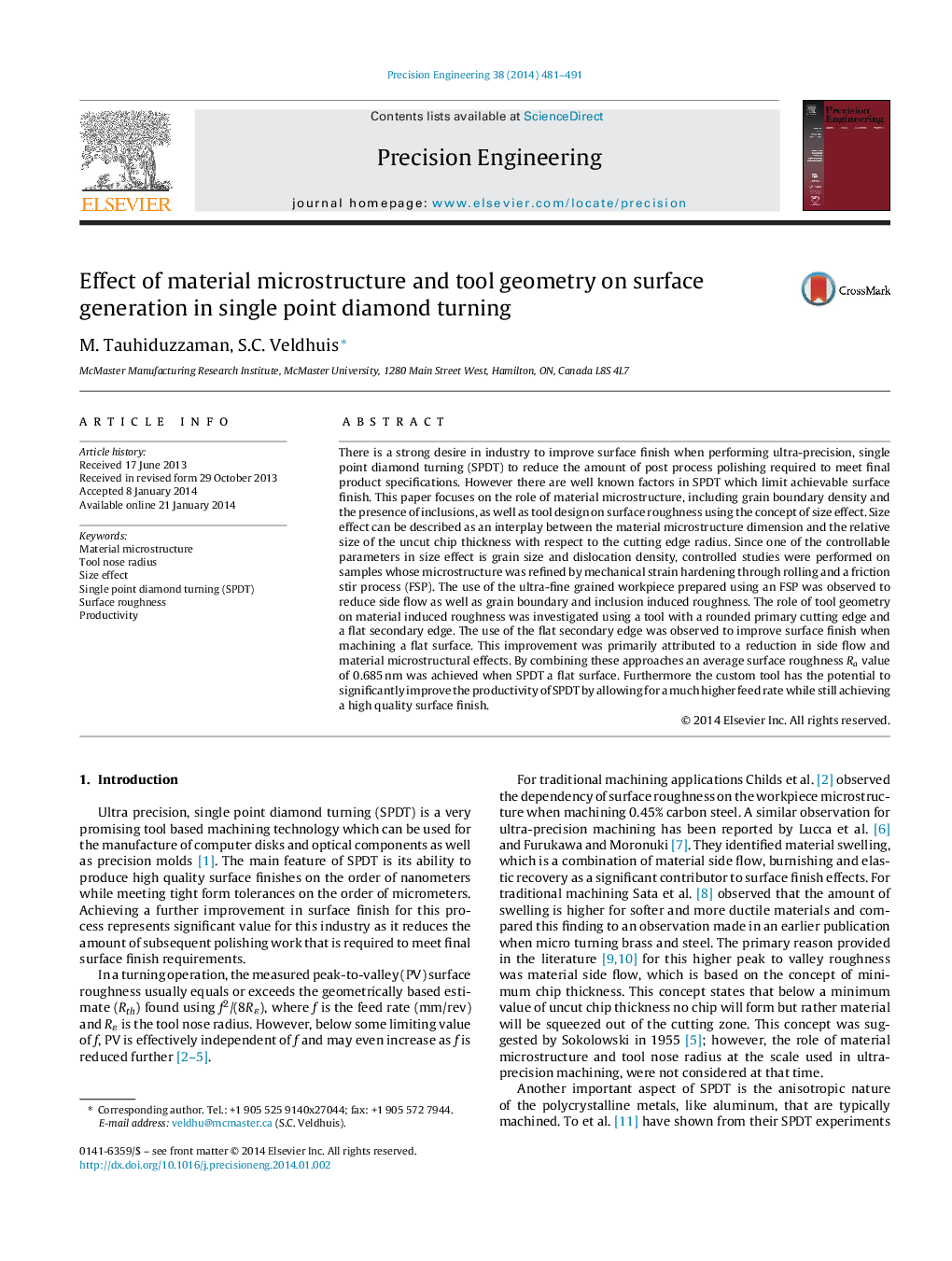| Article ID | Journal | Published Year | Pages | File Type |
|---|---|---|---|---|
| 10419465 | Precision Engineering | 2014 | 11 Pages |
Abstract
There is a strong desire in industry to improve surface finish when performing ultra-precision, single point diamond turning (SPDT) to reduce the amount of post process polishing required to meet final product specifications. However there are well known factors in SPDT which limit achievable surface finish. This paper focuses on the role of material microstructure, including grain boundary density and the presence of inclusions, as well as tool design on surface roughness using the concept of size effect. Size effect can be described as an interplay between the material microstructure dimension and the relative size of the uncut chip thickness with respect to the cutting edge radius. Since one of the controllable parameters in size effect is grain size and dislocation density, controlled studies were performed on samples whose microstructure was refined by mechanical strain hardening through rolling and a friction stir process (FSP). The use of the ultra-fine grained workpiece prepared using an FSP was observed to reduce side flow as well as grain boundary and inclusion induced roughness. The role of tool geometry on material induced roughness was investigated using a tool with a rounded primary cutting edge and a flat secondary edge. The use of the flat secondary edge was observed to improve surface finish when machining a flat surface. This improvement was primarily attributed to a reduction in side flow and material microstructural effects. By combining these approaches an average surface roughness Ra value of 0.685Â nm was achieved when SPDT a flat surface. Furthermore the custom tool has the potential to significantly improve the productivity of SPDT by allowing for a much higher feed rate while still achieving a high quality surface finish.
Related Topics
Physical Sciences and Engineering
Engineering
Industrial and Manufacturing Engineering
Authors
M. Tauhiduzzaman, S.C. Veldhuis,
